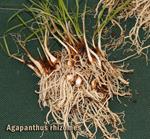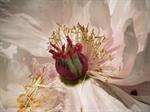
Discover the world of Botany;
under the guidance of an international team of outstanding tutors.
This is very much an "applied" course, with relevance to the real world.
ACS Student comment: "It has been an eye opener!! I am now living in a different world, my whole perspective to life and nature has changed and now I cherish it more. It has broadened my mind and advanced my level of looking at things in my every day work as well. [My tutor] encourages me a lot and that kept me going. She would give more positive constructive correction where necessary as if it was not that bad at all. She has been supportive and understanding.Very good." Lucia Masuku, South Africa - Botany 1 course.
COURSE STRUCTURE
The course is divided into 10 lessons as follows:
1. Taxonomic Classification of Plants
2. Cells and Tissues
3. Specific Vegetative Parts of a Plant
4. Flowers and Fruit
5. Seed and the Developing Embryo
6. Photosynthesis and Growing Plants
7. Respiration
8. The Role of Water
9. Movement of Water and Assimilates through a Plant
10. The Effects of Tropisms and Other Growth Movements
AIMS
On successful completion of this course, students will be able to:
- Understand the relationship between the scientific principles of this unit and horticultural practices
- Demonstrate a knowledge of the Plant Kingdom and understanding of the taxonomic hierarchy
- Identify and describe the different types of plant cells and tissues, their structure and function
- Determine the role and function of specific vegetative parts of the plant
- Determine the role and function of the reproductive parts of the plant
- Demonstrate an understanding of the role and function of the seed in the life cycle of the plant
- Explain the mechanism and the role of photosynthesis in the metabolism of plants and relate to plant growth in controlled environments
- Explain the mechanism and the role of respiration in the metabolism of plants
- Demonstrate an understanding of the role of water in the plant
- Review the movement of water, solutes and assimilates through the plant
- Understand the effects of tropisms and other plant movements on growth and development
- Undertake risk assessments relevant to the learning outcomes in this unit
WHAT YOU WILL DO IN THIS COURSE
During this course, students will:
- Prepare a collection of forty pressed, dried, labelled plants
- Learn how to key out plants using a Botanical Key
- Identify the phyla, family, genus and species of ten unknown plants
- Identify modified plant parts on live plants
- Describe in botanical terms leaf shapes from a range of different plants
- Dissect and draw labelled diagrams of several flowers
- Collect fruits and categorise them by type (pome, drupe, etc)
- Germinate seeds and describe changes that occur to the seeds over time
- Observe changes in potted plants under varying levels of sunlight and relate this to photosynthesis
- Observe transpiration in live plants and relate this to theoretical knowledge
- Observe and record osmosis in an experimental situation
- Observe and record phototropism in plants

Do You Understand Flowers?
A flower is in fact a modified shoot. Its function is to enable the plant to reproduce sexually.
Flowers are made up of whorls (rings) of four parts:
Sepals – Collectively, sepals are known as the calyx and make up the outer whorl of the flower. The sepals are usually green. In most cases, their function is to protect the unopened flower bud. They may be shed when the flower opens, or otherwise curl up backwards.
Petals – The petals are usually the showy part of the flower, and are collectively known as the corolla. The calyx and corolla together are known as the perianth. The petals mainly function to promote pollination by attracting insects and other small animals to the flower.
Stamens – The stamens are the male part of the flower, and are collectively known as the androecium. A stamen consists of a stalk, called a filament, which carries an anther at its tip. The anther holds pollen. One of the two cells which make up a pollen grain eventually divides to form sperm cells.
Carpels – In the centre of the flower is the female part; the gynoecium. It consists of one or more carpels. The term pistil is used ambiguously to describe either a single carpel or a group of fused carpels. A single carpel is made up of a stigma, style and ovary. The stigma, with its sticky surface, functions to collect pollen. The style raises the stigma to promote pollen collection and connects stigma and ovary. The ovary contains one or more ovules, i.e. undeveloped seeds, in which the eggs are situated.
These flower parts are inserted onto the flower base, or receptacle, which is located at the tip of the flower stalk, or pedicel.